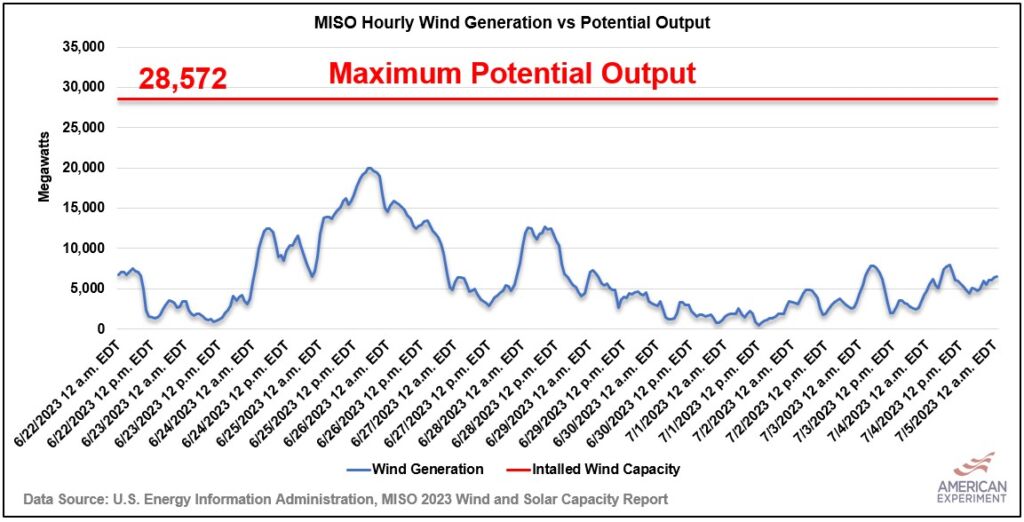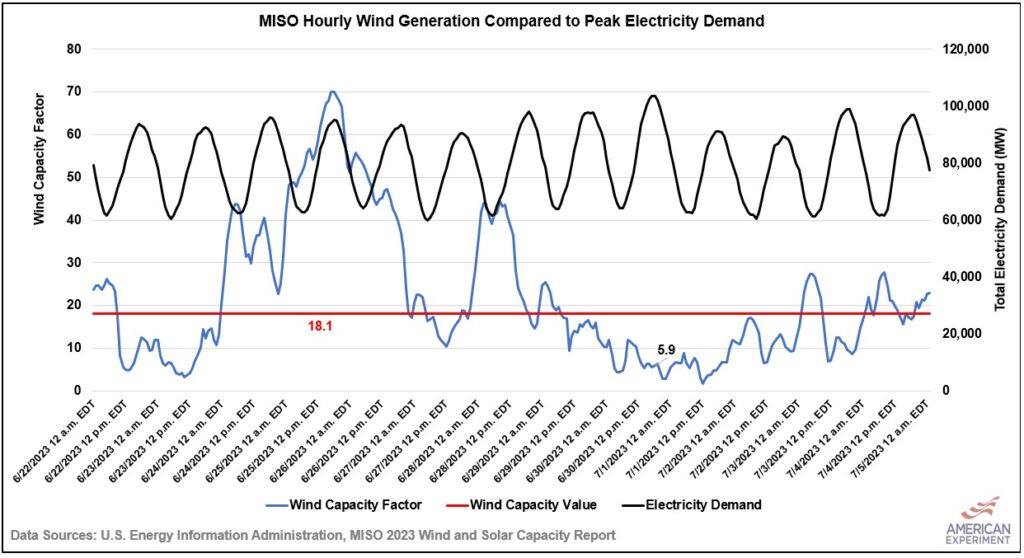Where has the wind gone?
It’s been very warm in Minnesota over the last two weeks, leading families to turn up the air conditioning. One thing that hasn’t been turned up over the last 14 days? The wind turbines operating on the regional electric grid to which Minnesota belongs, the Midcontinent Independent Systems Operator (MISO).
Data from the U.S. Energy Information Administration (EIA) show that wind generation has been variable over the last two weeks, which isn’t surprising. Wind generation was fairly decent from June 24th through the 27th, but it has been anemic since June 28th.

The graph below shows wind capacity factors in MISO during the same period in blue. A capacity factor is a percentage of how much electricity a power plant generates compared to its theoretical maximum output.
The graph also shows the capacity value that MISO gives to wind turbines, which is intended to measure the reliable capacity that the asset is supposed to contribute during peak electricity demand. In 2023, MISO expects wind turbines to operate at an 18.1 percent capacity factor during times of peak demand, shown in red in the chart.

The chart is a little busy, but the black lines show hourly electricity demand as it fluctuates throughout the two-week period. We can observe that wind underperformed its expectations during the period with the highest demand over the last two weeks.
When electricity demand was highest, wind produced only 5.9 percent of its potential output, compared to its capacity value of 18.1 percent. This means MISO expected wind turbines to produce 5,171 MW of electricity during this time, but they only produced 1,686 MW. This overestimation of capacity value is a big problem because MISO is increasingly dependent on the wind to keep the lights on.
MISO projects that it has enough reliable power plant capacity this summer to meet peak demand plus a margin of safety. However, the expected capacity surplus of 4,760 MW includes 5,171 MW of wind generation to be in operation during these times, when we’ve already seen that isn’t necessarily the case.

Mitch Rolling and I often refer to wind capacity value ratings as “phantom firm” resources because maybe they will be available to generate electricity, or maybe they will fall short like they did last week.
All of this bodes poorly for the reliability of the electric grid in the future as more coal plants are forced to retire, and electric companies attempt to replace them with a combination of wind, solar, and battery storage.
All of this begs the obvious question, why don’t companies like Xcel Energy turn their wind turbines up?